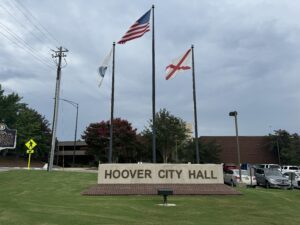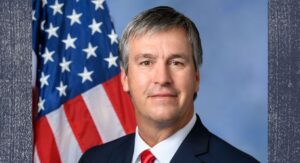Gov. Kay Ivey deploys National Guard to fight Louisiana wildfires
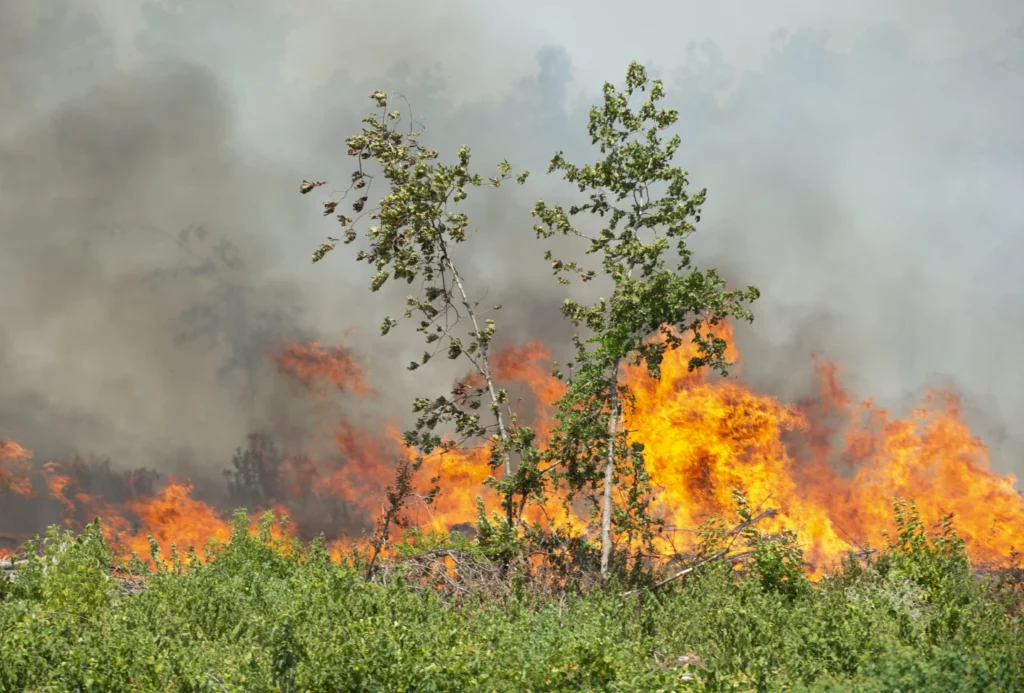
On Monday, Alabama Governor Kay Ivey announced on Twitter that she was deploying Alabama National Guard troops along with two Black Hawk and a Chinook helicopters to Louisiana to fight the wildfires there. Gov. Ivey wrote, “I have authorized the @AlabamaNG to deploy two black hawks and a chinook to assist Louisiana in combatting the devastating wildfires. Our prayers are with all affected and the emergency responders. Alabama stands ready in this time of crisis to help win this fight. @LouisianaGov.” A drought combined with record-breaking high temperatures has led to more than 450 fires in Louisiana. The Tiger Island Fire is the largest wildfire in the state’s history. According to local news reports, it tore through Beauregard Parish in the southwestern part of the state and grew from an estimated 15,000 acres to over 33,000 acres between Friday and Sunday. The fire is currently only 50 percent contained. The fires are already responsible for two deaths. All 1,200 residents of Merryville in Beauregard Parish were forced to evacuate their homes. The fires have already consumed an estimated 20 structures. Mike Strain is commissioner of the Louisiana Agriculture and Forestry Department. “Wildfires this many and of this intensity are unprecedented,” Strain told The Washington Post. Louisiana is one of the wettest states in the country and averages 771 wildfires a year, according to 10-year average data from the department. The state has averaged 21 wildfires per day over the past several weeks, Strain said. “With this kind of heat, the low humidity, and the lack of rainfall, this is probably the driest conditions, the most drought-prone conditions we’ve had in a generation,” Strain said. On Sunday, Louisiana Governor John Bel Edwards held a Unified Command Group meeting with all the responding state and federal agencies who continue to provide state resources and assistance to all parishes impacted by the wildfires. The Governor’s Office of Homeland Security and Emergency Preparedness (GOHSEP) announced that FEMA has approved Louisiana’s request for a Fire Management Assistance Grant (FMAG) declaration to help with wildfire fighting efforts for the Lions Camp Road Fire and Providence Fire in Vernon Parish. “We remain in constant communication with all of our federal partners and are grateful for their quick approval of our request for assistance to help Vernon Parish combat these dangerous wildfires,” said Gov. Edwards. “The conditions Louisiana is facing are unprecedented, and unfortunately, there is no evidence it’s going to end any time soon. Now is not the time to let our guard down. We must remain vigilant and ensure that we are doing all we can to prevent any additional fires. This means adhering to the statewide burn ban, properly disposing of cigarettes, securing tow chains, and being extra careful to avoid any outdoor activities that involve lighting a fire. Lastly, I want to remind everyone that wildfire smoke is spreading across Louisiana, not just in parishes with active wildfires. You may notice reduced visibility and the smell of smoke. If you have respiratory issues, avoid outdoor activities while these conditions persist.” Louisiana is under a statewide burn ban that remains in place until further notice, and there are no exceptions. To connect with the author of this story or to comment, email brandonmreporter@gmail.com.
Wallace State announces millions in new funding
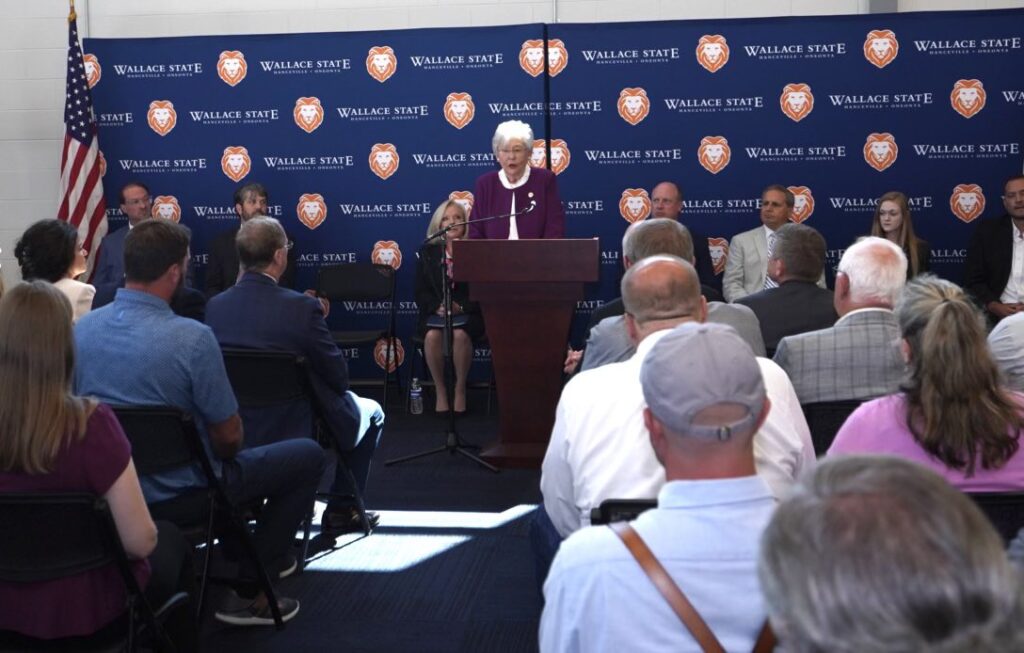
Wallace State Community College last week celebrated the grand opening of the $8.8 million Center of Welding Technology and Innovation Center. At the ribbon-cutting ceremony, Wallace State President Dr. Vicki Karolewics announced new plans for almost $49 million in capital investments to build or renovate three buildings on the Hanceville campus. “Our theme for today is rightfully entitled Building the Workforce because as one of Alabama’s most ambitious colleges, that is our mission — to build the workforce of the future,” Karolewics said. “We began incubating entrepreneurs over a decade ago, and we are proud of the hundreds of jobs created by ZeroRPM, Sequence Health, and DB Technologies in this community,” Karolewics continued. “This Innovation Center project is projected to create ninety-eight jobs and $25 million in revenue for our area within the first eight years.” “It’s an honor to be a part of this history-making day,” said Alabama Governor Kay Ivey. “We are literally standing on ground zero in the campaign to equip new Alabama workers and those who are choosing to reenter the workforce with skills to succeed.” While the state has record-low unemployment, Gov. Ivey has become increasingly troubled by the state’s ranking nationally as a state with one of the lowest workforce participation rates. “Providing pathways for them to join the workforce is a major priority,” Ivey said. “Alabama’s 24 community colleges are on the front lines in delivering the training many of these workers need to get to work.” The 30,000-square-foot Center for Welding Technology and Innovation is the largest training center in the Southeast. The new Welding Technology Center has seven robotic welding stations; nine virtual welding simulators; 81 welding booths; 20 grinding booths; a fabrication area with two welders, a plasma CNC table, and pipe welding equipment; and three state-of-the-art classrooms with built-in cameras, microphones, and speakers to allow hosting online classes. Skilled, certified welders are in high demand by Alabama industry. Economic developer Dr. Nicole Jones told Alabama Today, “The $48 million capital investment will allow Wallace State Community College to provide multiple trade credentials and certifications for in-demand automotive, electrical, welding, and STEM careers. Whether someone is a traditional postsecondary student or desires a career change later in life, Wallace State Community College offers opportunities to excel.“ Karolewics said that $4.2 million will be used for the expansion and renovation of the Machine Tool Technology building. Wallace State has partnered with HAAS Automation, which has been critical in enabling Wallace State to produce the most advanced machinists in this region. Another building project is a $9.6 million Facility for Automotive Technology to accommodate the transformation of the automotive industry to electric and autonomous vehicles. Dr. Karolewics said Wallace State has partnered with Mercedes Benz, Nissan North America, Cullman Electric Cooperative, and the Tennessee Valley Authority on this project. Benton Nissan donated a Nissan Leaf to the Advanced Automotive Service Technology program, as Mercedes-Benz has done in the past. This is the college’s first electric vehicle for training. The Cooperative and TVA have committed $44,000 for two electric vehicle chargers, with another planned in the future. The largest building project is a $35 million STEM Gateway Building, which will house all the college’s first-year students in mathematics, English, humanities, speech, and chemistry, as well as the Culinary Arts program, a digital learning center, and a tutoring center. Dr. Jones said, “Education and training and stable employment help break the cycle of generational poverty, and when Alabamians are working, we all benefit.” To connect with the author of this story or to comment, email brandonmreporter@gmail.com
Judge extends restraining order on issuing cannabis licenses until September

On Thursday, a Montgomery Circuit Court heard arguments from plaintiffs that the court’s temporary restraining order (TRO) on the state’s issuing of medical marijuana licenses be extended. Montgomery Circuit Judge James Anderson gave permission to the Alabama Medical Cannabis Commission (AMCC) to meet on Thursday and vote to implement their own stay on the issuing of cannabis licenses. Anderson extended his temporary restraining order to a hearing on the afternoon of September 6. The AMCC initially issued the licenses in June but then halted the license awards after an issue was detected in the tabulation of the awards. One of the aggrieved parties, Alabama Always, sued to block the issuing of the awards, claiming that the Commission did not follow the Alabama Open Meetings Law. The licenses were awarded for a second time in August. Alabama Always’ application for an integrated facility license was again rejected by the Commission. Verona was awarded a license in June, but not in August. They have since filed suit calling into question the process by which the awards were made in August. Attorney Mark Wilkerson, who represents the AMCC, told Judge Anderson that the commission intends to go back to “square one” and issue the licenses again. An attorney who represents one of the groups awarded a processor license asked that since the suit has been brought by parties seeking integrated facility licenses, and that there has been no complaint from growers or processors, that the growers, processors, transporters, and dispensary licenses be allowed to proceed. An attorney who represents a hemp processor in the Phenix City area whose application was denied then stood up and said that she had filed Sunday to enter this case and was seeking relief from the court. Judge Anderson took no action to release the processor, grower, transporter, or dispensary licenses from the TRO. An attorney for the plaintiffs expressed his disappointment with the process, stating, “In the last two or three days, we thought we had something in place.” That proposed agreement became unraveled at a conference with the judge held earlier on Monday at 11:30. One attorney said, “The director is not here. The deputy director does not appear to be here. We don’t know where we are getting this information from.” “I don’t want to negotiate in public,” the plaintiffs’ attorney said. “…..but that is what we are doing,” Judge Anderson quipped. “I would like for the commission to put a stay in play so the court does not have to order it.” Chey Garrigan is the Executive Director and founder of the Alabama Cannabis Industry Association. Garrigan held a press conference at the conclusion of the court proceeding. “We got everybody in the state fired up, asking, ‘When am I going to get my card?’” Garrigan said. “Let the growers go ahead and grow, let the processors go ahead and process, and let the dispensers go ahead and dispense.” “Every day, I get letters and emails from Alabamians who are seeking relief from medical cannabis,” Garrigan said. “We should have had this up and off the ground in September 2021. The people who were not in the courtroom today are not being represented. How many times are we going to have to go through these applications?” At the close of the hearing, Judge Anderson said, “I heard that Mississippi passed this six months after Alabama did. I heard that they were issuing prescriptions in January, so for once, we can’t say thank God for Mississippi.” To connect with the author of this story or to comment, email brandonmreporter@gmail.com.
Katie Britt and colleagues demand answers after Biden Administration hands over $6 billion to Iran
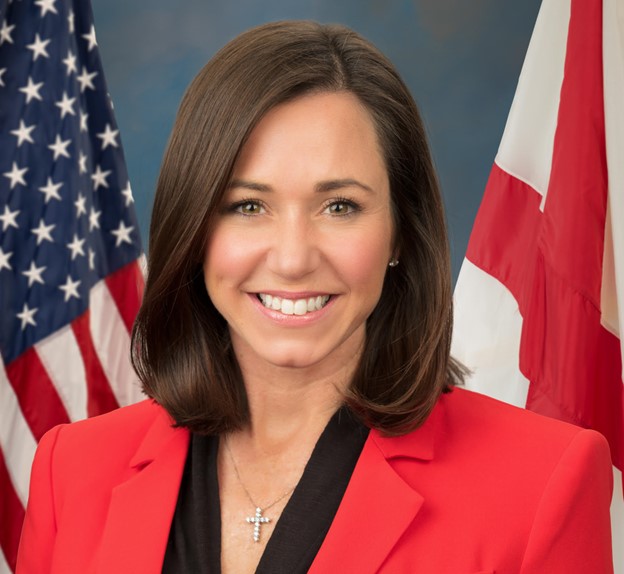
On Monday, U.S. Senator Katie Britt (R-Alabama) joined a letter by Sen. Tim Scott (R-South Carolina), the ranking member of the Senate Committee on Banking, Housing, and Urban Affairs, and 24 of her Republican colleagues in demanding answers from the Biden Administration about the approximately $6 billion reportedly paid to Iran in exchange for Americans wrongfully being held as political hostages by the Iranian regime. “Handing $6 billion to the world’s largest state sponsor of terrorism is a reckless and disastrous decision that threatens the lives of Americans and our allies across the globe,” said Senator Britt. “Once again, the Biden Administration has chosen to appease our adversaries and set a dangerous precedent. President [Joe] Biden’s weakness will only embolden hostile actors to engage in further aggression around the world. We must achieve peace through strength, and I will always fight to hold this Administration accountable for putting American families at risk.” In a letter to Secretaries Antony Blinken and Janet Yellen, the senators wrote, “When the Obama administration released $400 million in liquidated assets to Iran in 2016, we warned that this dangerous precedent would put a price on American lives. Seven years later, the current administration is providing a ransom payment worth at least fifteen times that amount to the world’s largest state sponsor of terror, in yet another violation of the United States’ long-standing ‘no concessions’ policy. In the release of Executive Order 14078 on July 19, 2022, the White House admitted that ‘terrorist organizations, criminal groups, and other malicious actors who take hostages for financial, political, or other gain—as well as foreign states that engage in the practice of wrongful detention, including for political leverage or to seek concessions from the United States—threaten the integrity of the international political system and the safety of United States nationals and other persons abroad.’ The release of such a significant sum to the Iranian regime runs entirely counter to that claim and will only serve to encourage additional hostage-taking for financial or political gain.” Joining Senators Britt and Scott on the letter were Senators Jim Risch (R-Wisconsin), Roger Wicker (R-Mississippi), Tom Cotton (R-Arkansas), Bill Hagerty (R-Tennessee), Bill Cassidy (R-Louisiana), Chuck Grassley (R-Iowa), Lindsey Graham (R-South Carolina), Steve Daines (R-Montana), Marsha Blackburn (R-Tennessee), Kevin Cramer (R-North Dakota), Ted Budd (R-North Carolina), J.D. Vance (R-Ohio), John Cornyn (R-Texas), Joni Ernst (R-Iowa), Pete Ricketts (R-Nebraska), John Hoeven (R-North Dakota), Todd Young (R-Indiana), Mike Crapo (R-Idaho), Roger Marshall (R-Kansas), James Lankford (R-Oklahoma), Thom Tillis (R-North Carolina), John Kennedy (R-Louisiana), John Barrasso (R-Wyoming), and Shelley Moore Capito (R-West Virginia) After more than two years of quiet negotiations, Iran has released five Iranian American dual citizens into house arrest, according to original reporting by the New York Times – quoting officials at the State Department and the National Security Council. “This is just the beginning of a process that I hope and expect will lead to their return home to the United States,” Secretary of State Antony Blinken said on Thursday. “There’s more work to be done to actually bring them home. My belief is that this is the beginning of the end of their nightmare.” The prisoners are Siamak Namazi, Emad Sharghi, and Morad Tahbaz, who had all been jailed on unsubstantiated charges of spying, as well as two others whose families have withheld their names. One of the unnamed Americans is a scientist, and the other is a businessman, according to sources. In addition to releasing the $6 billion in seized oil funds, the U.S. has agreed to hand over imprisoned Iranians as part of the prisoner swap. Britt and her colleagues had objected to paying the ransom before the deal had been finalized. Britt was elected to the Senate in 2022. To connect with the author of this story or to comment, email brandonmreporter@gmail.com.
Judge sets date for Donald Trump trial to begin the day before Alabama presidential primary

Alabama voters will go to vote for their choice for President of the United States on March 5. The leading Republican contender, former President Donald Trump, will be in court for his criminal trial that begins on March 4. The judge in former President Trump’s Jan. 6-related federal court case announced Monday that jury selection will begin on March 4. U.S. District Judge Tanya Chutkan declared that a trial date “cannot and should not” depend on the timetable of a defendant’s work life. Special counsel Jack Smith had wanted the trial to begin in January. Trump’s defense team had asked that, under the circumstances, the trial should be postponed until 2026. Judge Chutkan rejected that request and instead set the March 4 date – the day before the Super Tuesday primaries, which will likely determine the nominees for both major parties. Trump accused Chukan of being a “biased Trump Hating judge” who set a trial date that was “just what our corrupt government wanted.” Fulton County Prosecutor Fani Willis had asked the Chutkan to set the trial to begin on that same date. Trump faces four separate trials for 99 different indictments. This trial in federal court has to deal with his actions on January 6, 2021. Did President Trump’s efforts to overturn the Electoral College results constitute an insurrection, and did he act illegally? The Fourteenth Amendment to the Constitution specifically bars persons who participated in an insurrection from serving in federal office. This has to do with former members of the Confederate States of America who had taken up arms against the U.S.A. Some scholars argue that January 6 did constitute an insurrection, and this provision would apply. Former Arkansas Governor Asa Hutchinson made that argument during the first Republican Presidential Debate. Trump also faces a trial in Georgia where prosecutors claim that he and 18 associates were involved in an illegal conspiracy to overturn Georgia’s presidential election results. Trump also faces federal charges stemming from his alleged mishandling of classified documents found in his home in Mar-A-Lago, Florida. Classified documents were also found in Joe Biden’s Delaware home and Mike Pence’s home, and the issue of classified material by former Secretary of State Hillary Clinton. None of those people were ever charged with any crimes. Trump and his campaign are also charged with election fraud in New York City related to alleged payouts to former porn star Stormy Daniels and other women for silence about alleged illicit liaisons before Trump first ran in 2016. Trump is the first former President in the history of the United States to be indicted for a crime. At present, he faces the prospect of four separate criminal trials on up to 99 different individual counts. Additionally, he has codefendants who have been charged in each of these four rounds of indictments. Potentially, all four of these trials could take place at separate points during the coming election year. There is no evidence that all of the charges and allegations have hurt Trump in the polls. Trump remains extremely popular with Republican primary voters, but the legal jeopardy he faces have made some legal scholars question whether or not he can actually be the nominee. How the legal drama will influence voters is an unknown, given the nation has never experienced a presidential campaign like this. Many argue that some of these charges could have been brought before now. That prosecutors waited until Trump was a declared 2024 presidential candidate and then sought criminal trials amid the already established campaign calendar has led some Republicans to charge that Democrats have weaponized the courts against Trump. To connect with the author of this story or to comment, email brandonmreporter@gmail.com.
Daniel Sutter: Climate Change and Political Responsibility

We continually hear that climate change is making extreme weather – from wildfires in Canada and Maui to Hurricane Hilary – worse. Unfortunately, this allows politicians to evade responsibility for their inaction and mistakes. Researchers have long emphasized that nature’s actions and human exposure together produce disasters. A hurricane striking an uninhabited island is not a societal disaster. Many natural hazards have high-risk areas, and people create exposure when choosing to live or work in these places. This is not bad: the Florida Keys are beautiful, and many industries must be in vulnerable places. The extra costs of extreme weather are worth bearing if the value from living or working there is commensurately greater. Our actions once we locate in vulnerable areas impact vulnerability, particularly the quality of construction. We can build homes and businesses resistant to winds, floods, and even tornadoes. Not every engineering design will be cost-effective, but we can build stronger. Government typically takes actions offering community-wide protection. Levees and management of public forests are examples. The National Weather Service provides weather forecasts and warnings. Many voices attribute all extreme weather to climate change. One Hawaii state senator stated of the Maui fires, “And I just think this is the new normal not just for the state of Hawaii but for the whole planet, for the whole country.” Apocalyptic talk disregards climate change’s expected impact on severe weather. A warmer future should make hurricanes modestly stronger with more precipitation; extreme weather will become somewhat more extreme. A small increase in the strength of extreme weather, however, can sometimes have large societal impacts. Nobel Prize winner William Nordhaus estimates that hurricane damage is proportional to the eighth power of landfall wind speed. The projected 9 percent increase in windspeed would double annual damage. This is significant, not apocalyptic, and in line with how our actions affect hurricane damage. Employing all wind-resistant construction techniques may reduce hurricane damage by half. Strengthened construction might offset global warming’s impact on hurricanes. Let’s consider now the Maui fires. Many voices blame the dry conditions on climate change. But most of Maui was in seasonal, not exceptional, drought. A wet spring produced lots of plant growth – fuel for the fire season. Combustible invasive grasses have overgrown former sugar plantations. Hurricane Dora passing near the Hawaiian Islands contributed to the strong winds at the time. Power lines appear to have sparked some fires. Clearing brush (or trees) near power lines and replacing aging lines can avoid such fires, but combatting climate change has impacted fire prevention. Electric utilities trying to meet Hawaii’s 100 percent renewable power mandate have reportedly reduced maintenance and brush clearing to offset expensive wind and solar. Climate change offers politicians the opportunity to evade responsibility for such actions. Mismanagement of forests in California and Canada has contributed to fires. Neglect of levees left New Orleans vulnerable to Katrina. Poor decisions made the Maui fires more dangerous. Political decisions producing unnecessary vulnerability to extreme weather should not surprise. Politicians want to deliver new things to voters. People already expect existing levees to protect them. The rarity of disasters means the next one may occur after today’s officeholders have retired. And if a disaster happens, call it an act of God. Today, climate change replaces God. Reducing fossil fuel use offers little protection against extreme weather. Projections attribute 7 and 23 percent of global emissions through 2100 to the U.S. Let’s say the U.S. is responsible for 10% of emissions that might produce another 2 degrees Celsius warming by 2100. The U.S. will be responsible for 0.2 degrees of warming, with Hawaii responsible for a tiny fraction of this. Zeroing out Hawaii’s carbon emissions would have no measurable impact on extreme weather. Opportunists use climate change to push restructuring our economy and society. We can protect ourselves from extreme weather; Alex Epstein shows that extreme weather deaths per capita worldwide have fallen 98 percent. We should prudently protect against fires, floods, and hurricanes because they will occur regardless of warming. And we should hold politicians failing in this task accountable at the ballot box. Daniel Sutter is the Charles G. Koch Professor of Economics with the Manuel H. Johnson Center for Political Economy at Troy University and host of Econversations on TrojanVision. The opinions expressed in this column are the author’s and do not necessarily reflect the views of Troy University.
Supreme Court says work on new coastal bridge can resume

The Alabama Supreme Court ruled Friday that the state can continue work on a new bridge that will give motorists an alternate route to state beaches. Justices reversed an injunction issued by a Montgomery judge that had halted work on the bridge across the Intracoastal Waterway. The injunction was issued after the operators of an existing toll bridge sued the state. Justices said the trial court did not have subject-matter jurisdiction over the bad-faith claim that served as the basis of the preliminary injunction. The Alabama Department of Transportation said construction will resume in the coming weeks. “This is an important victory for Alabama’s coastal residents and millions of visitors to our state. The need for a new, free bridge is obvious,” Alabama Department of Transportation spokesman Tony Harris said. He said the bridge will help relieve traffic congestion at the coast and provide an additional evacuation route during hurricane season. Baldwin County Bridge Company, which operates an existing toll bridge to get to Gulf beaches, filed a lawsuit seeking to block construction of the new bridge that would be located just over 1 mile (1.6 kilometers) away from its existing toll bridge. The company argued that Transportation Director John Cooper acted in bad faith during negotiations to lower toll amounts and other operational changes, and then pursued the new bridge project to financially damage the company. “Today’s decision sends an unfortunate message to businesses across this nation – come to Alabama on notice that anything an unelected government official chooses to do to you, he can do, and you are powerless to stop him even if he is acting in bad faith,” Neal Belitsky, president of Baldwin County Bridge Company, told al.com. Montgomery Circuit Judge Jimmy Pool in May sided with the toll bridge company in issuing a preliminary injunction ordering a halt to construction of the project. Pool said trial evidence showed that Cooper pushed for the new bridge without traffic studies and had only one discussion about it with the governor. Republished with the permission of The Associated Press.
Florida prays Idalia won’t join long list of destructive storms with names starting with ‘I’
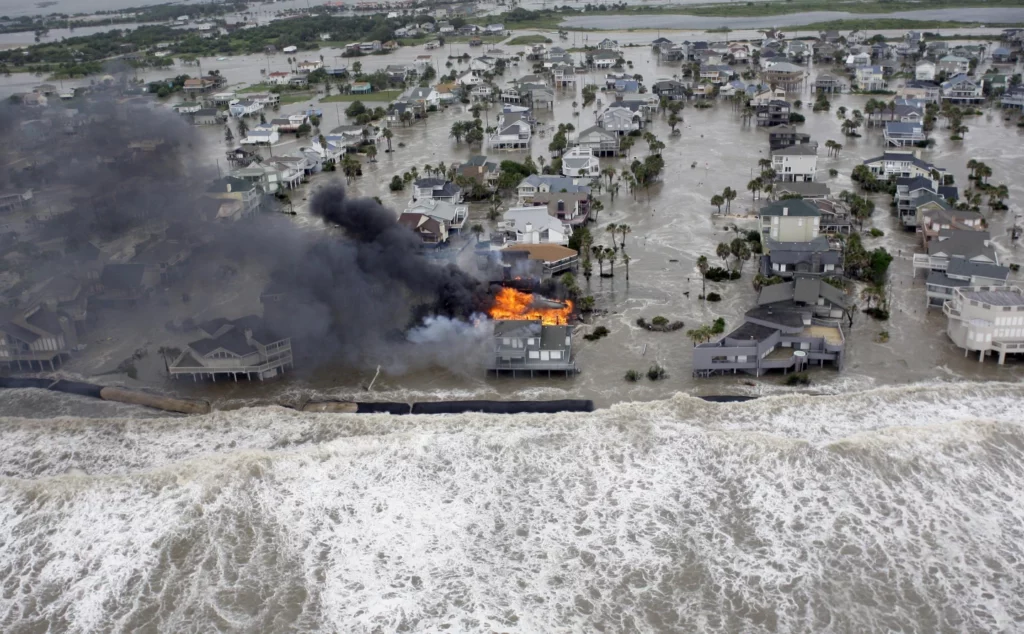
Floridians pray that when Idalia hits the Gulf Coast, it won’t join the long list of destructive Atlantic Ocean storms whose names started with “I.” Since 1955, 13 Atlantic storm names beginning with “I” have been retired, according to the National Weather Service. That happens when a storm’s death toll or destruction is so severe that using its name again would be insensitive, according to the World Meteorological Organization, which oversees storm naming. Some letter has to be No. 1, and hurricane season often reaches its peak around the time that the pre-determined alphabetical storm-name list gets to the “I.” After “I” storms, 10 names that begin with “F” have been retired, as have nine storms beginning with “C,” University of Miami hurricane expert Brian McNoldy said. In addition to the 13 retired “I” names from Atlantic Ocean hurricanes, a handful of Pacific Ocean storms beginning with “I” have been retired since 1982. The U.S. began using female names for storms in 1953 partly to avoid confusion and make warnings more efficient by using easy-to-remember names, according to the National Oceanic and Atmospheric Administration. Before then, radio stations used to broadcast warnings with numbers and names that confused people. By the late 1970s, male names were also being used for storms in the Atlantic and Pacific oceans, according to NOAA. Notorious I-storms in recent memory have included: HURRICANE ISABEL The 2003 storm reached Category 5 strength over the Atlantic. Though it weakened before making landfall on North Carolina’s Outer Banks, its winds caused extensive damage. More than 8 feet (2.4 meters) of seawater flooded rivers across the Chesapeake Bay region, according to accounts from the National Weather Service. The hurricane was blamed for 17 deaths. HURRICANE IVAN Ivan tore through Grand Cayman island in 2004, damaging or destroying an estimated 95 percent of the buildings there, the National Weather Service said. Then, it slammed into the United States near Gulf Shores, Alabama, spawning more than 100 tornadoes as it moved inland. More than 92 people were killed. HURRICANE IKE Ike “left a long trail of death and destruction” in Haiti, Cuba, and the United States in 2008, the weather service said. An estimated 74 people in Haiti were killed by flooding and mudslides, the agency said. Later, it struck the U.S. as a Category 2 hurricane at Galveston Island in Texas. HURRICANE IDA Ida slammed into the Louisiana coast with winds of up to 150 mph in 2021, knocking out power to hundreds of thousands of people across New Orleans and nearby parishes. The deaths included at least five nursing home residents who were among about 800 elderly residents sent to a warehouse to try and survive the storm. HURRICANE IAN Ian struck Cuba as a major hurricane in 2022, bringing down the nation’s electric grid and causing blackouts across large parts of the island nation. Later, as a Category 4 hurricane, it slammed into Florida’s Gulf Coast, flooding houses on both coasts of the state, destroying reefs and bringing “red tide” algae to Gulf waters. Ian was blamed for more than 100 deaths, most of them in Florida. Republished with the permission of The Associated Press.
Biden administration to target drugs for price negotiations to lower Medicare costs
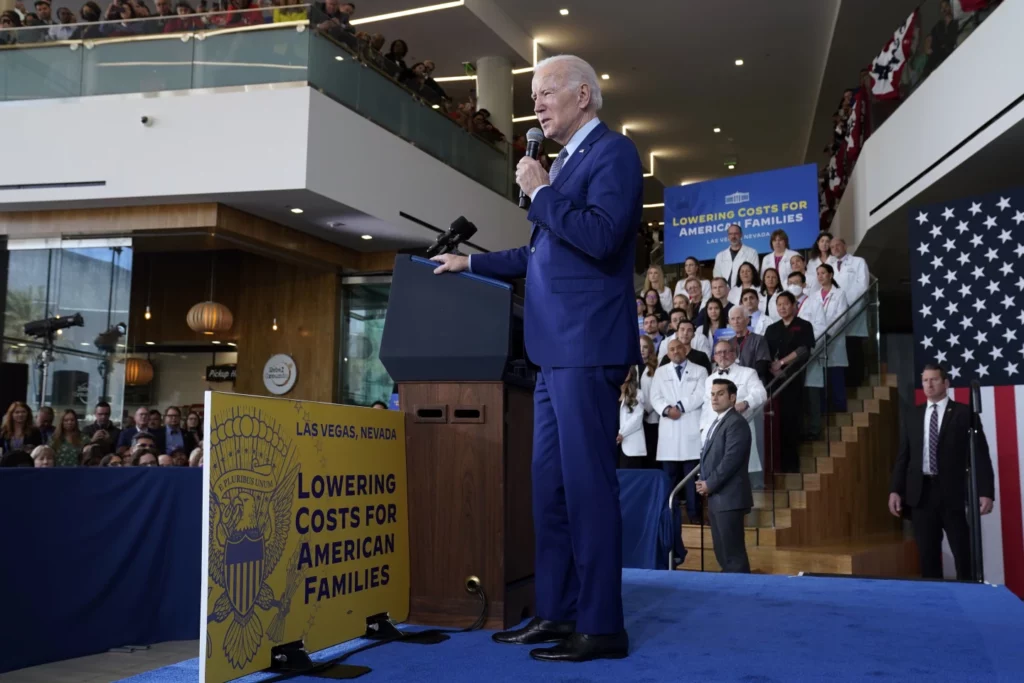
President Joe Biden’s administration will announce on Tuesday the first prescription drugs being targeted by the U.S. government for price negotiations as part of an effort to lower Medicare costs. The announcement is a significant step under the Inflation Reduction Act, which was signed by Biden last year. The law requires the federal government for the first time to start negotiating directly with companies about the prices they charge for some of Medicare’s most expensive drugs. The process has drawn legal challenges from drugmakers and heavy criticism from Republicans in Congress. It’s also a centerpiece of Biden’s reelection pitch as he seeks a second term in office by touting his work to lower costs for Americans at a time when the country has struggled with inflation. Biden plans to deliver a speech on health care costs from the White House after the announcement. He’ll be joined by Vice President Kamala Harris. More than 52 million people who are either 65 or older or have certain severe disabilities or illnesses get prescription drug coverage through Medicare’s Part D program, according to the Centers for Medicare and Medicaid Services, or CMS. About 9% of Medicare beneficiaries age 65 and older said in 2021 that they did not fill a prescription or skipped a drug dose due to cost, according to research by the Commonwealth Fund, which studies healthcare issues. CMS aims to negotiate the lowest maximum fair price for drugs on the list released Tuesday. That could help some patients who have coverage but still face big bills like high deductible payments when they get a prescription. Currently, pharmacy benefit managers that run Medicare prescription plans negotiate rebates off a drug’s price. Those rebates sometimes help reduce premiums customers pay for coverage. But they may not change what a patient spends at the pharmacy counter. The new drug price negotiations aim “to basically make drugs more affordable while also still allowing for profits to be made,” said Gretchen Jacobson, who researches Medicare issues at Commonwealth. Drug companies that refuse to be a part of the new negotiation process will be heavily taxed. The pharmaceutical industry has been gearing up for months to fight these rules. Already, the plan faces several lawsuits, including complaints filed by drugmakers Merck and Bristol-Myers Squibb and a key lobbying group, the Pharmaceutical Research and Manufacturers of America, or PhRMA. PhRMA said in a federal court complaint filed earlier this year that the act forces drugmakers to agree to a “government-dictated price” under the threat of a heavy tax and gives too much price-setting authority to the U.S. Department of Health and Human Services. PhRMA representatives also have said pharmacy benefit managers can still restrict access to drugs with negotiated prices by moving the drugs to a tier of their formulary — a list of covered drugs — that would require higher out-of-pocket payments. Pharmacy benefit managers also could require patients to try other drugs first or seek approval before a prescription can be covered. Republican lawmakers also have blasted the Biden administration for its plan, saying companies might pull back on introducing new drugs that could be subjected to future haggling. They’ve also questioned whether the government knows enough to suggest prices for drugs. CMS will start its negotiations on drugs for which it spends the most money. The drugs also must be ones that don’t have generic competitors and are approved by the Food and Drug Administration. CMS plans to meet this fall with drugmakers that have a drug on its list, and government officials say they also plan to hold patient-focused listening sessions. By February 2024, the government will make its first offer on a maximum fair price and then give drugmakers time to respond. Any negotiated prices won’t take hold until 2026. More drugs could be added to the program in the coming years. Republished with the permission of The Associated Press.

